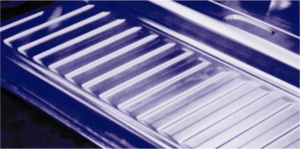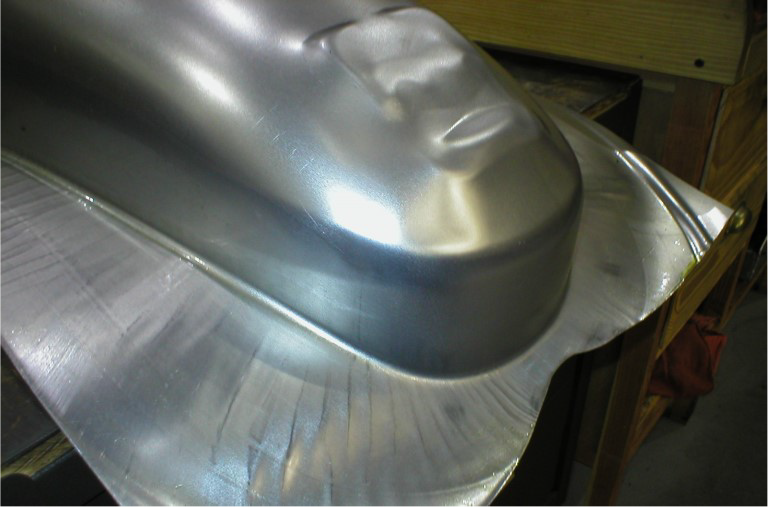As automotive fuel efficiency standards continue to increase, manufacturers must find ways of “light-weighting” their vehicle lines. Aside from AHSS and UHSS, aluminum alloys are an attractive and very viable option for manufacturers. While the newer steel alloys can be approached in a similar way to their predecessors used for generations, aluminum substrates have numerous advantages and disadvantages that need to be considered carefully:
 ALUMINUM ADVANTAGES VS. STEEL:
ALUMINUM ADVANTAGES VS. STEEL:
- Lighter weight than steel.
- Greater rust resistance.
- Greater recyclability.
- Good dent resistance in body panels.
ALUMINUM DISADVANTAGES VS. STEEL:
- More expensive than steel.
- Oxides formed on surface are abrasive to tooling.
- Forming aluminum is more challenging because it does not flow like steel.
- More difficult to weld than steel.
- Prone to spring back.
 Perhaps the biggest challenge when switching from steel to aluminum substrates in “light-weighting” is selecting an appropriate lubricant in forming aluminum. While oil-based lubricants have traditionally been employed in forming aluminum parts, changes in regulations, pretreatment and waste treatment processes have driven the focus toward synthetic chemistries. Synthetic lubricants are typically easier to remove in large pretreatment systems, easier to weld through and are generally easier to apply through conventional application equipment.
Perhaps the biggest challenge when switching from steel to aluminum substrates in “light-weighting” is selecting an appropriate lubricant in forming aluminum. While oil-based lubricants have traditionally been employed in forming aluminum parts, changes in regulations, pretreatment and waste treatment processes have driven the focus toward synthetic chemistries. Synthetic lubricants are typically easier to remove in large pretreatment systems, easier to weld through and are generally easier to apply through conventional application equipment.
From a chemical standpoint, lubricant selection poses many challenges. Many of the extreme pressure and boundary lubricants commonly used in the stamping of steel components lose their efficacy when applied to forming aluminum. The difference in the “drawability” elongation and material flow of most aluminum substrates differs significantly from those of steel alloys. The uniformity of material flow in the dies is often less than that demonstrated by steel and the oxide layers that aluminum generates to prevent further corrosion of the substrate are extremely abrasive to die coatings and tooling. All of these factors should be carefully considered when selecting a stamping fluid for forming aluminum alloys.
Another major difference between oil-based and synthetic chemistries is the types of residues left behind after forming aluminum. Straight oil and emulsifiable oil stamping fluids leave behind a layer of oil on the surface which helps protect the aluminum substrate from humidity and other environmental contributors to staining and rust. Synthetic chemistries typically leave behind less residue and the chemicals are further concentrated by evaporative loss of water. These super-concentrated areas of chemicals can pose issues in subsequent processes if prolonged storage of parts or tight nesting of parts occurs.
Water quality should always be considered in manufacturing processes. If water quality is poor or contains high levels of salts that can contribute to staining or corrosion, steps should be taken to select the proper chemistry and/or manufacturing processes to protect parts and tooling. Analysis of the diluent water source, prior to product conversion is highly recommended to help minimize the chances for staining and rust. Contact your IRMCO representative today to find out more or contact us at sales@irmco.com. Contact us to learn more!

